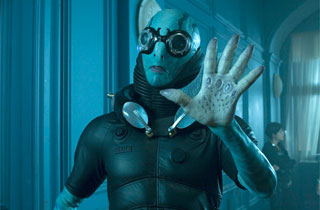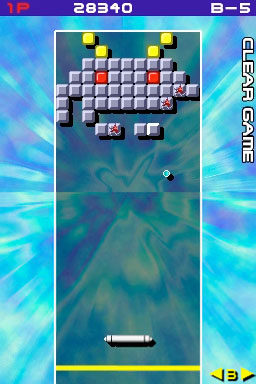Review: Hellboy 2: The Golden Army
Demon days
Revert to Saved recently had Hellboy week, so you might already have an inkling that I’m a fan of Mike Mignola’s blue-collar demon. However, the first Hellboy film didn’t entirely deliver. Although it retained something of the spirit of the original comic, it lacked its humour and fascination with folklore, instead concentrating on Lovecraftian nutcases and an inevitably burdensome origins arc.
Hellboy 2 is an entirely different beast, and although the story has veered far away from the comics, the movie feels much more like Hellboy. It’s funny as hell (pun possibly intended), has buckets of visual flair and imagination, and ticks all the boxes on the emotions checklist, providing a balanced, engaging movie with plenty of heart.
The folklore angle also comes to the fore. The plot centres around elf prince Nuada (a surprisingly buff ex-Bros Luke Goss) declaring war on humanity and aiming to use the mythical Golden Army to reclaim the world for the legions of underworld creatures that mankind has forgotten. But, like with Mignola’s comics, there’s more to this than a bunch of brainless scraps between strange-looking beasties—this is intelligent craziness.
First, it’s hard to egg on Hellboy and company as they battle to contain the various foes Nuada unleashes on humanity—after all, the humans in Hellboy’s world are often greedy and soulless, and Nuada’s desperately trying to save his kind before they fade away forever. And while Hellboy is ultimately the ‘hero’ of the flick, his role becomes increasingly questionable: he fights for humans who’ll never accept him, killing his ‘own kind’, who perhaps need his help more.
But it’s also telling that the most ‘human’ scenes in the movie happen with so-called monsters. Hellboy and fish-man Abe Sapien share one particularly memorable scene, drunkenly trying to understand the opposite sex. German mystic Johann Krauss—a disembodied ectoplasmic spirit—slowly realises that he’s lost his own humanity and needs to regain it. And even Nuada, despite his penchant for death and destruction, has sorrow etched across his face when his kind are harmed.
If there’s a negative aspect to The Golden Army, it’s that it sometimes feels like a series of set-pieces, strung together with a few slightly flimsy plot threads. However, the movie looks fantastic (not least the stunning clockwork Golden Army, and the troll market, which by comparison makes the Mos Eisley Cantina scene in Star Wars look humdrum), and it has more heart, humanity and imagination than any other movie I’ve seen this year, let alone other comic-book adaptations.

An angry Abe Sapien says how many stars he’d have given The Golden Army.
Comments Off on Review: Hellboy 2: The Golden Army



